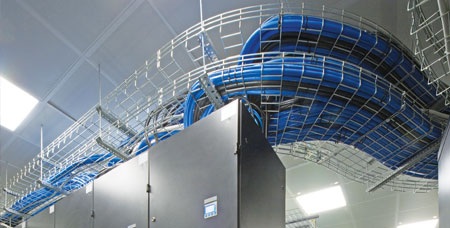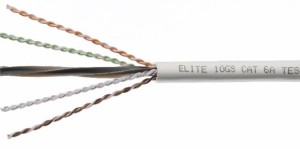
Cable Basket Trays – Uses and Benefits
Cable basket trays are described as go-to solutions for routing and supporting numerous cable runs. The wired frame enhances air circulation and cable ventilation. This can be appropriate beneath desks, elevated floors, or hanging tray systems. You can assemble basket trays for intersections, horizontal sections, mounting braces, hardware, and tray cutters.
enhances air circulation and cable ventilation. This can be appropriate beneath desks, elevated floors, or hanging tray systems. You can assemble basket trays for intersections, horizontal sections, mounting braces, hardware, and tray cutters.
The cable basket tray made of welded steel wires is considered the most popular support for copper and data cabling. The basket is light-weight and easy to install with complete array of cable tray accessories. Solid basket trays are recommended for heavier wires. These baskets are fabricated to withstand natural elements. Although the material is not solid steel, it is capable of protecting cables from corrosion and last longer.
Cable Distribution and Management
The cable basket makes possible efficient dispersal and management of cables. This process is accomplished by arranging cables inside the basket trays instead of pulling them through pipe lines. The act of yanking is certainly harder and time-consuming rather than using baskets. Laying down wires in the basket take only minimal time and ensures that cables are distributed evenly around the structure.
The baskets can be stretched along the building just like pipes. However, baskets are open facilitating easier access to the cables. At the same time, it provides sufficient protection to the network cabling system. Cable baskets are lighter with easier functions compared to trays which are quite bulky. Technicians can finish more installations in one day because of fast installation.
Installation Guidelines
Incidentally, it is important to make sure that cable trays should be installed as an inclusive system. The tray should be complete with all the supports mechanisms, fasteners, guards, connections, flexible vertical and horizontal spice plates. You have to mount cable trays so the joints will be accessible for inspection and modification. Support systems are needed so the distance does not go beyond the required measurements. Install intermediary support devices in case the weight of the cable is more than tray rungs’ load capacity.
Erect supports from channel members, twisted rods and other accessories provided by the cable tray manufacturer. Organize the supports in bar or wall-bracket models as called for by the application. Make sure to take away sharp border s from cable trays. You can attach the tray to the spice pates but use square neck-carriage bolts and self-locking nuts. The cable tray should support the building structure. Finally, mount the cable trays with sufficient space to allow access for the installation of network cables.




 A newly popularized cable is
A newly popularized cable is


